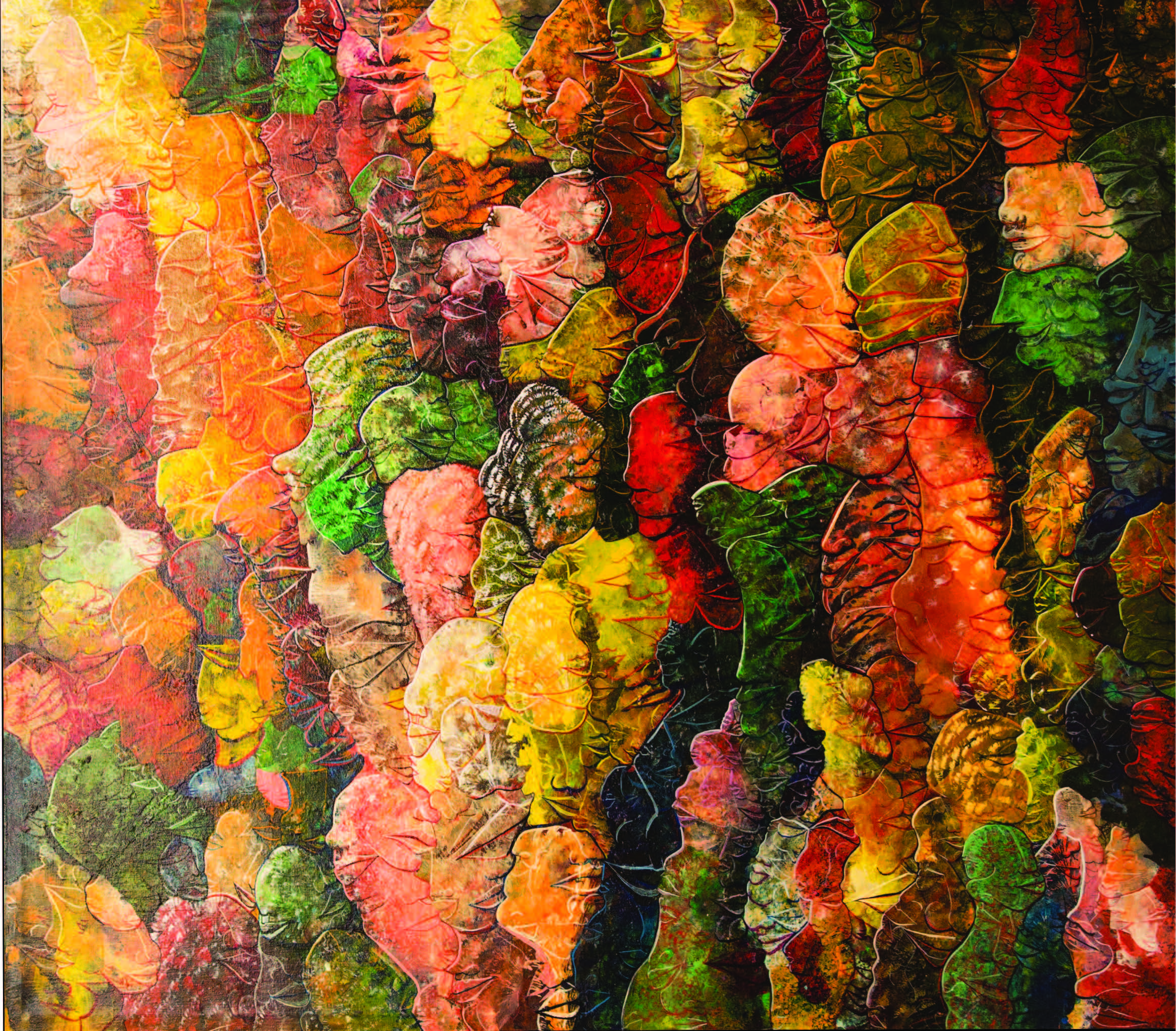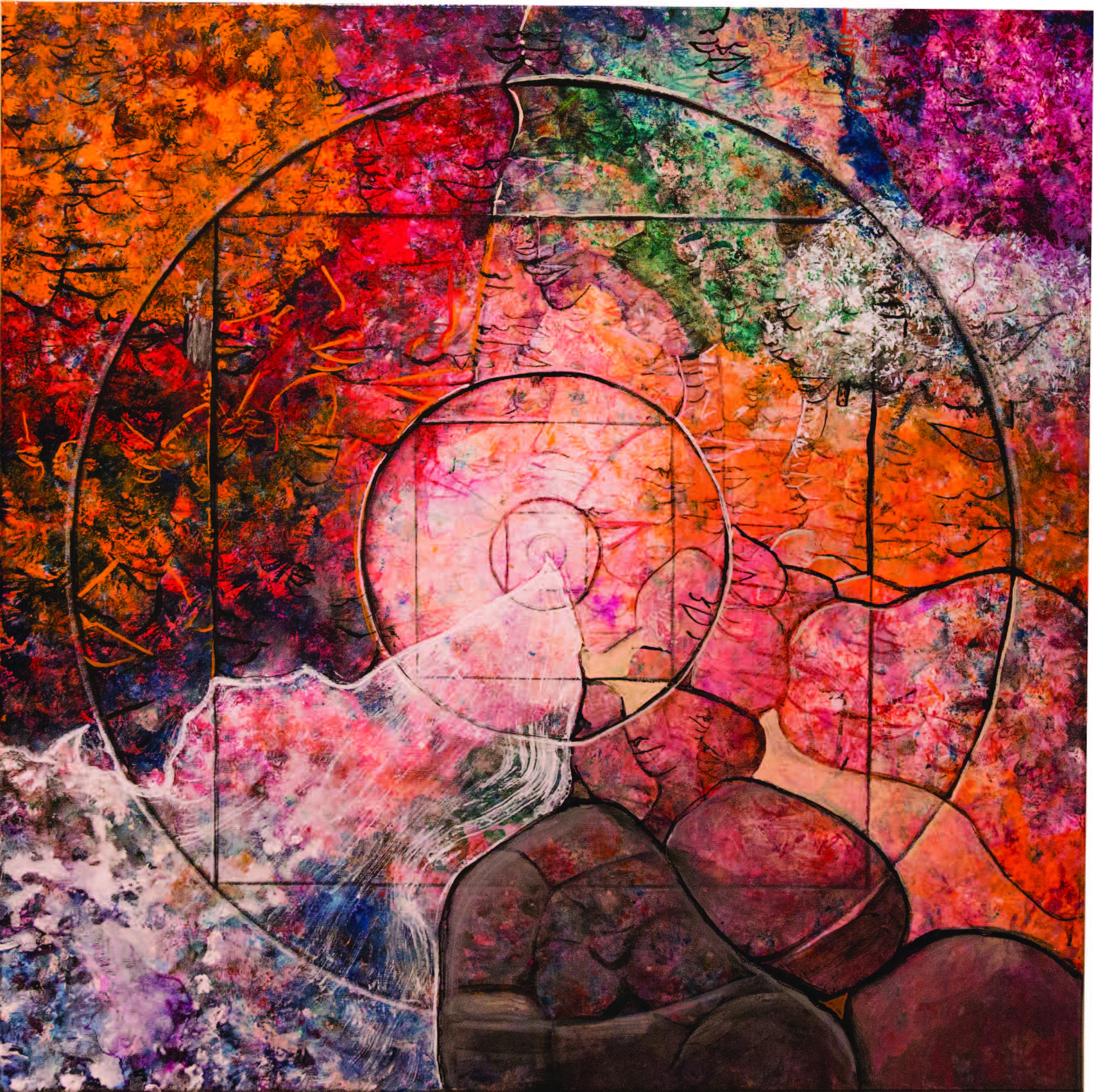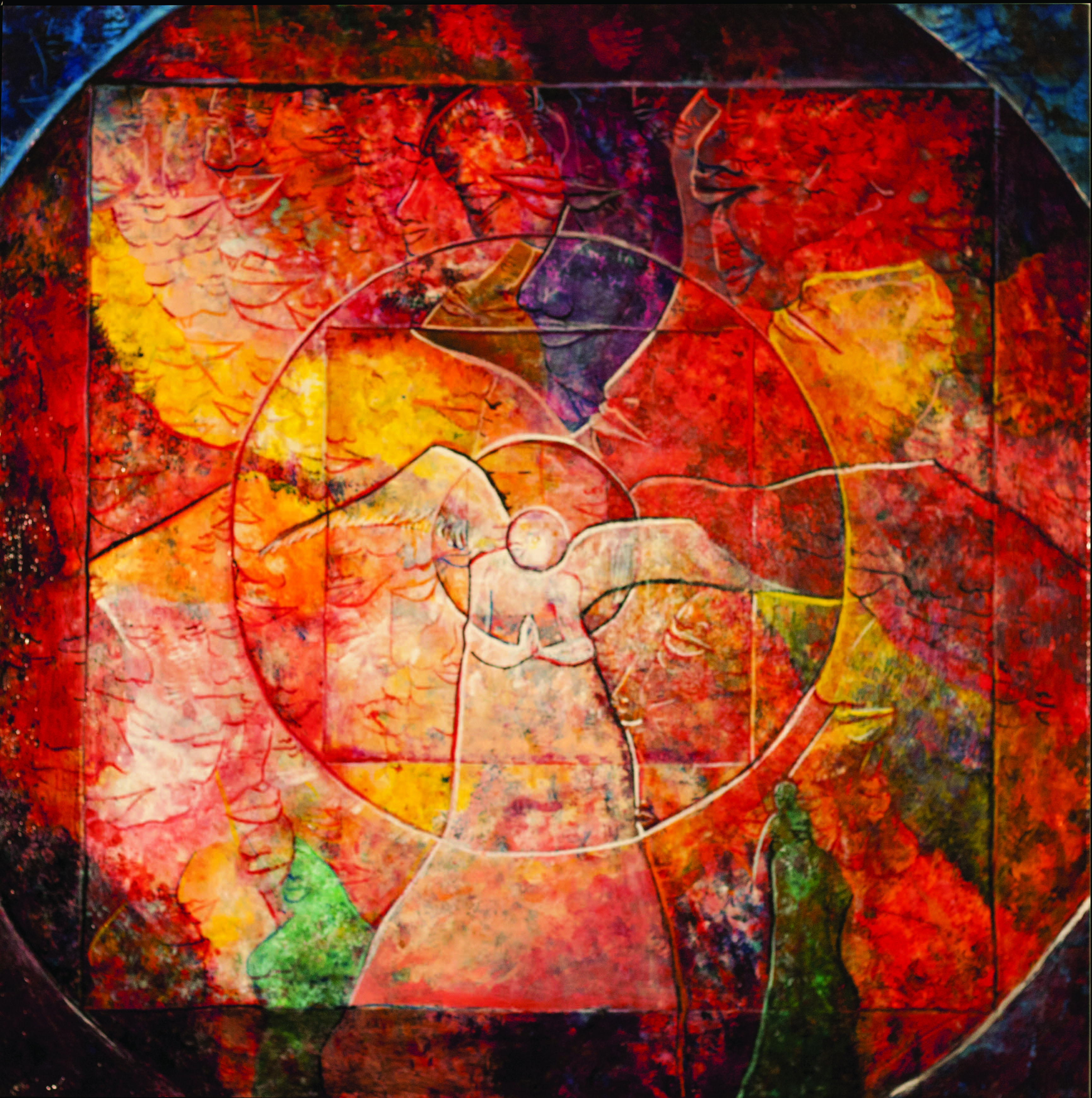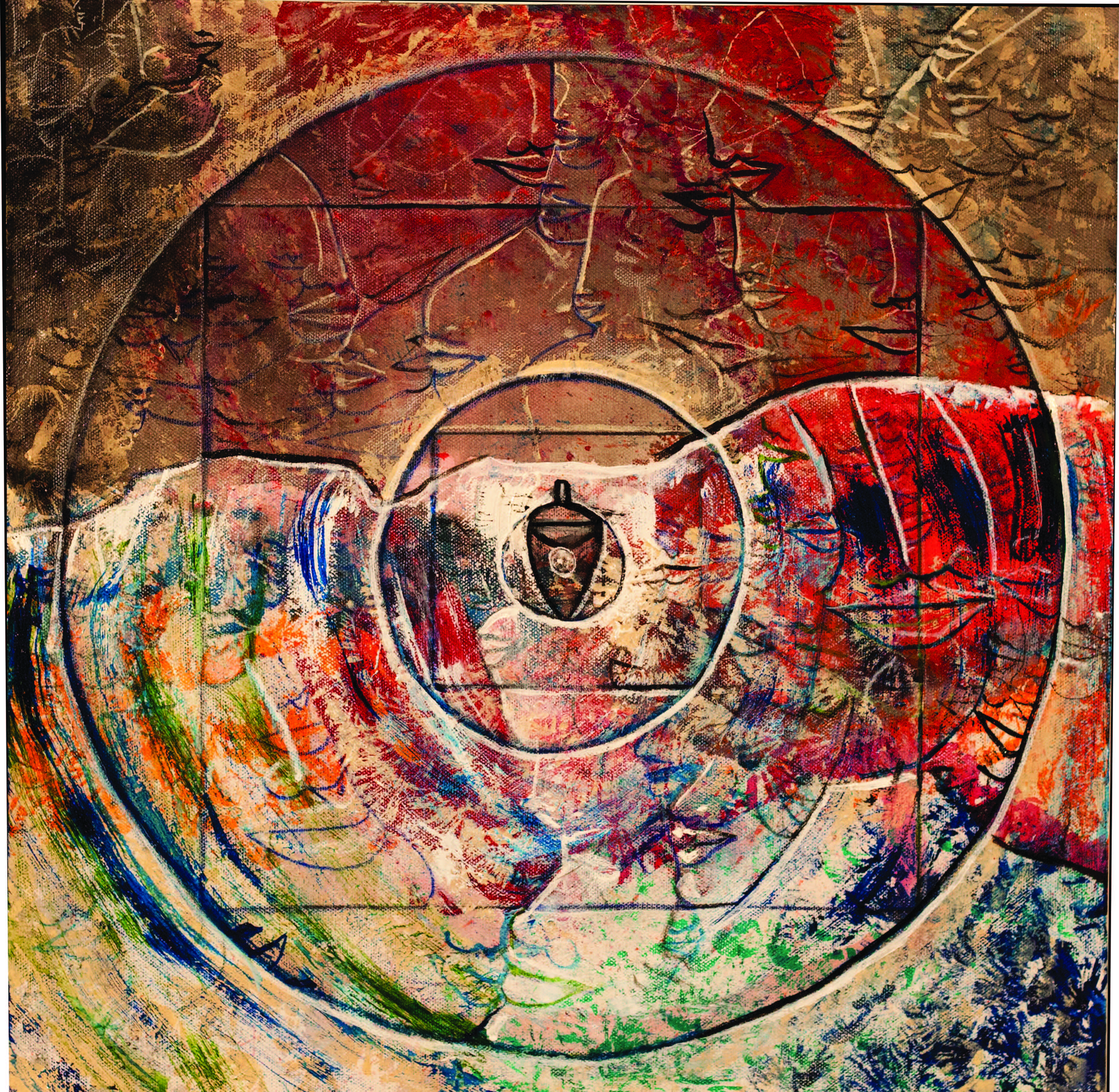



Born in Pine Bluff, Arkansas, Robert Sherman received his Bachelor of Fine Arts degree at The San Francisco Art Institute. He then earned a Master of Arts from San Francisco State University, where he remained for several years as an instructor in sculpture.
In time, he left San Francisco to paint exclusively. California's Mendocino County became his home for eight years, with one year off for a world tour, most of which was spent painting all throughout Asia. He later spent many years living, painting, and exhibiting in London.
Robert spent time living among the international art community of Cuenca, Eucador, where he has opened a new gallery.
In January, 2020 Robert re-establihed himself as a Califonia based artist.
When Robert Sherman gets around to writing the screenplay for the movie that is his life, it will require quite a number of episodes. For his is a life well-lived, fully experienced and since a very early age, art-focused.
His early life experiences mimic much that qualify as one version of the American Experience. His story intersects the prejudices of a Jewish family living in the south; the discovery of the classics in music and literature; the fantasy of movies and popular culture; and an early affection for art.
Fortunately, there were the early epiphany moments: days spent roaming the Louvre and appreciating every single moment; the arrival one day of a particular Horizon magazine with an illuminating article on the Bay Area Figurative Painters. As he noted in his recent book, Portrait of the Artist as an Old Man - And How He Got That Way (2017), “When I read that article, I made a vow to myself: I was not going to be one of those people who just thought and talked about what they wanted to do; I was going to do it.” Soon thereafter, a BFA from the San Francisco Art Institute and later an MFA from San Francisco State University pointed him in the right direction.

With a portfolio filled with dedication, skill and an indominable spirit, Robert Sherman set off on a long and successful career in painting. When he first studied painting, a figurative style dominated abstract efforts in the art world; and so it was with Sherman’s work. One of his pre-art school self-portraits alludes more to his future: bold color contrasts with a mix of values; heightened texture; a spiritual and sometimes enigmatic mood; and a love of paint.

By 1963 his paintings had taken a giant leap, past simple objective imagery to line, shapes and forms endowed with a symbolic spirit. For example, in the painting, “Rape of Europa”, the artist gives us an imaginative retelling of the Greek myth, immortalized in painting by Titian and others, tells the tale of Europa, the daughter of a Phoenician king who possessed unrivaled beauty. Once seen and coveted by Zeus, he transformed into a white bull. Europa found him most curious and was seduced by its beauty. Once she climbed aboard, he carried her off to Crete, regained human form and mated with her. In Sherman’s hands, the tale becomes an erotic metaphor, ecstasy given nightmarish overtones by the artist’s dominating brushstrokes and dark chromatic values, as well as his depiction of the bull as a dark, looming force. In the background, he paints his self-portrait, the artist as voyeur.
His subject soon developed a new richness with organic and floral backgrounds in which the figure moves in and
out of the picture plane  The result – a play
with time and movement that began to satisfy the artist’s innate sense of humanity and poetry. While this
emphasis continued from the late 1960s
to the 1970s , the impetus of this approach to imagery continued well into the 1980s and has continued to the
present day. His paintings often have a layer of serial imagery, that is, a repeated pattern or motif that
accentuates movement within the work.
The result – a play
with time and movement that began to satisfy the artist’s innate sense of humanity and poetry. While this
emphasis continued from the late 1960s
to the 1970s , the impetus of this approach to imagery continued well into the 1980s and has continued to the
present day. His paintings often have a layer of serial imagery, that is, a repeated pattern or motif that
accentuates movement within the work.
Late 1960's

1970's


What differs in the development of Bob’s sensibilities of an artist is how he frames his subjects. For example, Flowing to the light mandala takes us into an imaginative work where the organic and topographical are seen through the scope of concentric circles. No simple play with geometry, in Bob’s mind we are viewing a construct of interrelationships, a systemic view of nature and the universe, and layers of meaning that are both literal and psychological. This sensibility is part of who Bob is, for from the 1980s into this new century, he finds fulfillment in this mystic.
Late 1980's

New Century

While his surfaces are alive with the pure pleasure of color and movement, they are not without challenges. The viewer must be willing to penetrate the surface and experience with the artist a world of change and instability. Only when the viewer goes beyond the surface, do the symbols begin to play their role. Sherman relies on his inspiration and ability to infuse the work with his intent and motivation. He expects the viewer to seek new discoveries in his work at every viewing.


I would be remiss if I did not account for a few of Sherman’s fascinating digressions. In 1964, after receiving the BFA, he spent a year making mixed media sculptures. These mementoes of war (left) sought to turn our attention away from war to love, reason and compassion. Around 1967, he created How the West Is Won (right), a monumental 8-and-a-half-foot tall, eight-foot-wide epic. A full year’s work, it was a picture of America as he saw it at the time, filled with archetypes and oppression; it is accompanied by a poem that points out the hypocrisy of the familiar phrase. Like many painters before him, Sherman occasionally veers into printmaking and drawing, using them as an exercise to limber up and focus on his subjects.
Another of the artist’s diversions was his extended stay in Cuenca, Ecuador. Here, not only did his imagination flourish in the tropical light surrounded by the lush vegetation, but the region’s mystique spoke to him, for the sensed the presence of the ancient civilization and culture, rich with symbols, magic and myths. Here, too, the artist experienced a profound acceptance among the art community for the depth and power of his paintings.
His art has also touched the political realm as we can see in several works created during Richard Nixon’s administration. Art historical allusions are mixed with complicated compositions and collaged imagery to create works that are at once remarkable delicate and at the same time contain screaming polemics, as we see in Mad Puppetry, Nix-on and Agnew. From the early 1970s – from a time when the Kent State killings, the release of the Pentagon Papers, the Watergate Scandal and the Vietnam War held the headlines – his 1972 Self Portrait was completed. His appears as the artist/patriot – the familiar clinched fist, only this time it is squeezing a tube of paint from which a gun emerges. There is the American flag and a reference to a colonial uniform, all framed in an arched window like we might see in a church. Subtle, no; effective, yes.
For Sherman, the commitment remains – organic abstraction fused with figurative motifs that are couched in mystery and imagination. And there is the harmony of color – floral, topographical, abstract – holding a commanding visual presence. And beneath the surface lies another works of symbols and myth. As the artist noted in his book from the chapter titled “Dark and Light,” – My life and work have been a shift between dark and light…. As you grow older and gather experience, you live in an aging body, with pain… You can choose evenness or continue to devour life. I choose to “live until I die.”
Michael Preble
New Orleans, Louisiana, 2020
Postsript:I first met Robert Sherman when I served as Curator at the Arkansas Arts Center in Little Rock in the mid-1980s. In the process of curating an exhibition of his work, I came to know Bob as a friend, and to admire the bravura of his work. When he asked me recently to prepare an essay for his website, I was delighted. And I am reminded how art can be a foundation for creating a camaraderie, even after some 35 years.